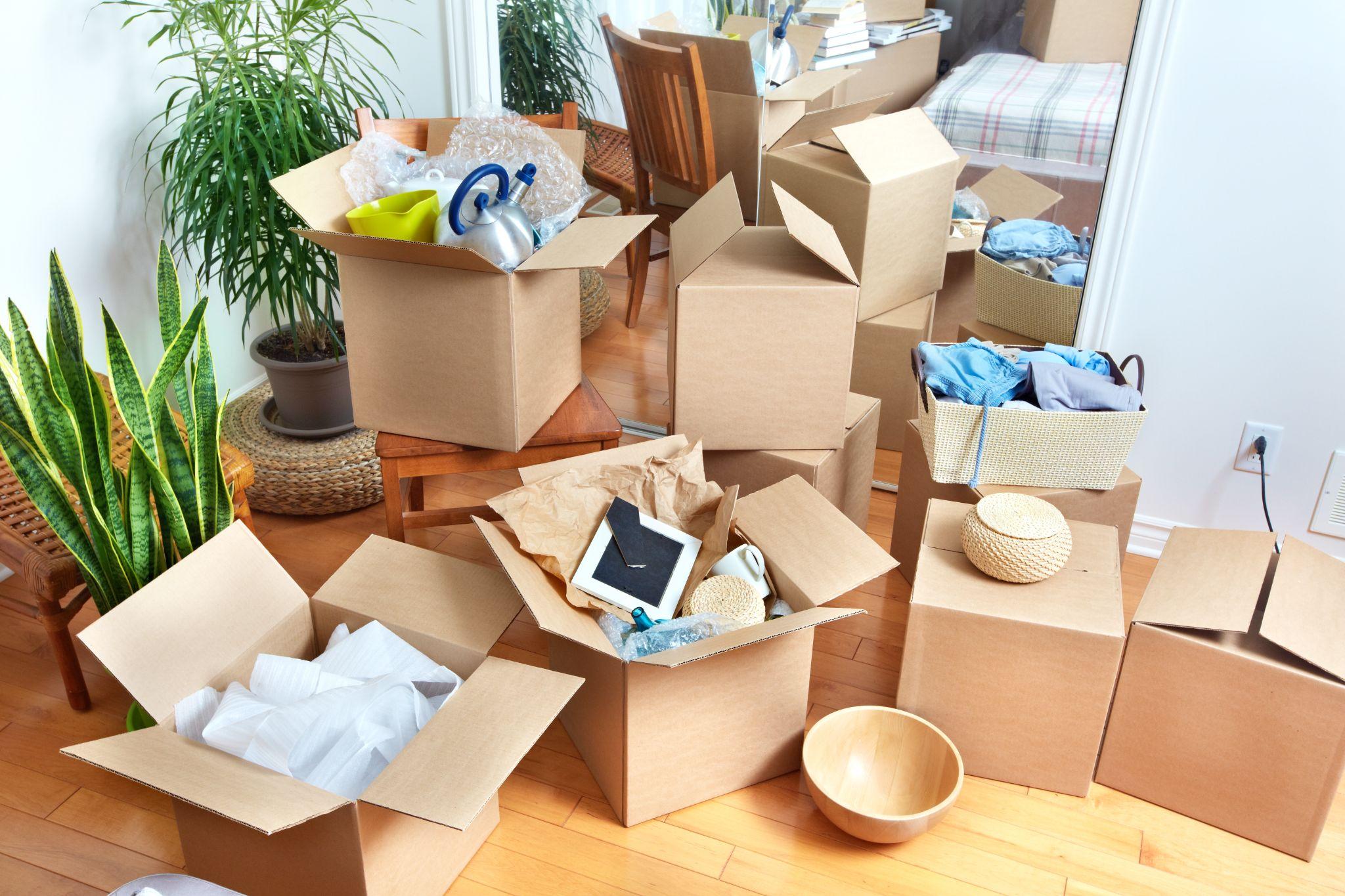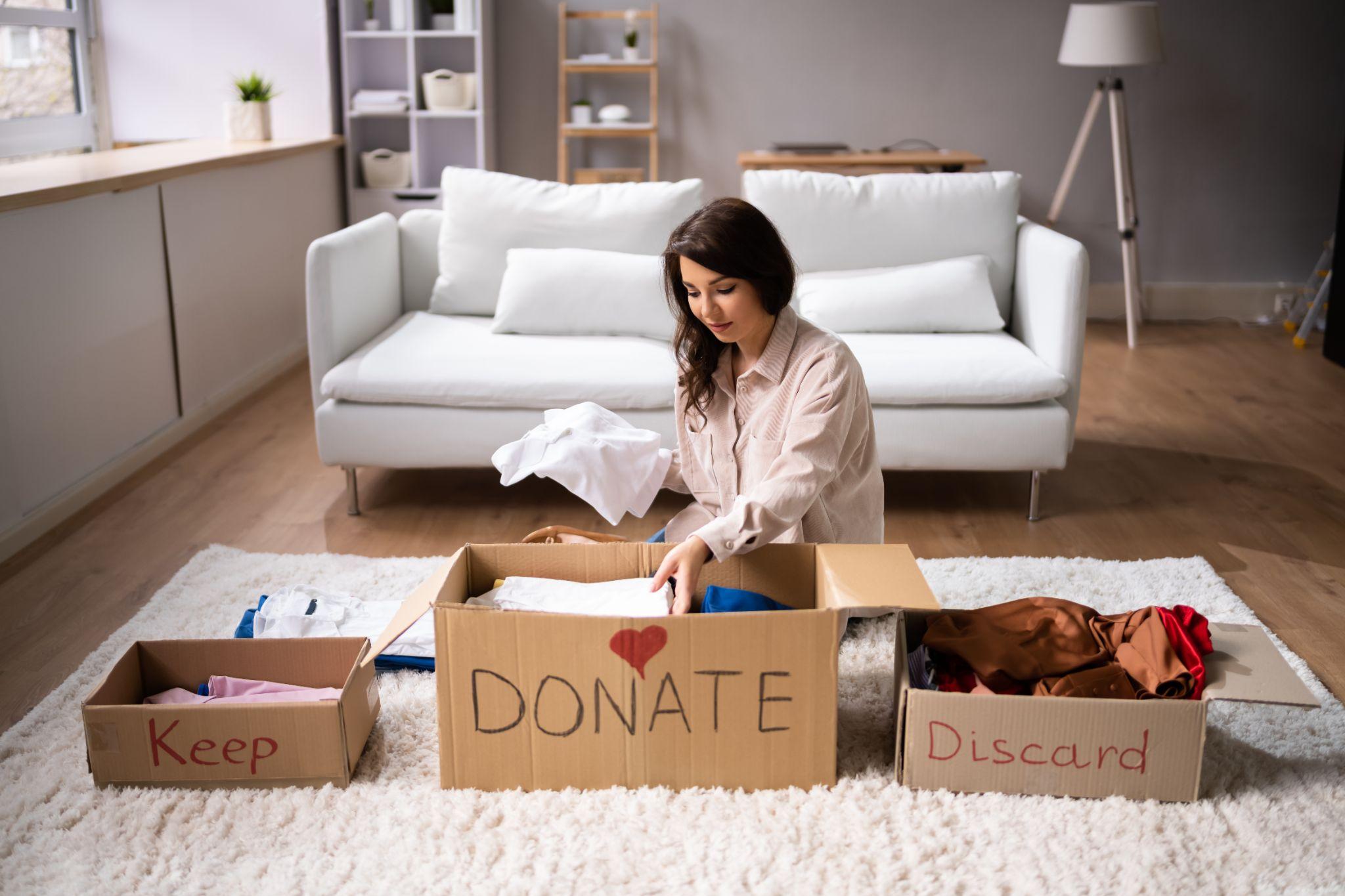Moving to a new home is an exciting journey, but it can often be overshadowed by the stress and chaos of packing and organizing. One effective way to ease this burden is by taking the time to declutter your space before the big move. Decluttering not only simplifies the packing process but can also significantly reduce moving costs. By carrying only what you truly need, you can start fresh in your new home with a sense of clarity and organization.
Below, we’ll guide you through the steps to effectively declutter your home, making your move smoother and more cost-effective.
The Benefits of Decluttering
Decluttering before a move is about more than just getting rid of excess stuff; it’s about making your relocation more efficient and less stressful. By sifting through your belongings and keeping only what is necessary, you significantly reduce the volume of items to pack and unpack, leading to lower moving costs.
Furthermore, decluttering can provide peace of mind, providing a sense of control and accomplishment. It provides a great opportunity for you to let go of the past and embrace the new opportunities that your new home brings.
Getting Started
The key to successful decluttering is to start early and have a clear plan. Begin by setting realistic goals and create a schedule that breaks down the decluttering process into manageable tasks, giving yourself plenty of time for each step in the process.
Tackle one room at a time and categorize your items into four groups: keep, sell, donate, and discard. Be honest with yourself about what you use and need. Items that haven’t been used for a year or more are usually good candidates for sale or donation.
Remember, the goal is to lighten your load for the move and to make your new space more organized and serene.
Decluttering Room by Room
Approach each room with a systematic mindset. In the living room, assess decorative items, books, and electronics. Keep only those that add value to your life or which have a specific purpose in your new home. In bedrooms, sort through clothing and personal items, keeping only what you love and use regularly.
The kitchen can be a treasure trove of unused gadgets and expired goods. Be ruthless with duplicates and items that have outlived their usefulness. Don’t forget to tackle storage areas like basements and attics, where forgotten items often accumulate. This room-by-room method ensures that no corner of your house is overlooked in the decluttering process.
Dealing with Emotional Attachment to Items
Letting go of personal belongings can often tug at our heartstrings, especially when they hold sentimental value. To manage the emotional aspects of decluttering, it’s important to acknowledge your feelings and understand that it’s normal to be attached to certain items.
A useful strategy is to take photographs of sentimental items you can’t keep, preserving the memory without the physical object. Consider also the idea of “practical sentimentality”—keeping a select few cherished items that represent a collection or memory, rather than holding onto everything.
If parting with certain items feels too overwhelming, give yourself permission to set them aside and revisit your decision later. Remember, decluttering doesn’t mean erasing memories; it’s about making room for new experiences while cherishing the past in a more manageable, organized way.
Selling, Donating, Disposing, and Storing Items
Once you’ve decided what to keep, sell, donate, discard, or store, it’s time to take action. For unwanted items you wish to sell, consider using online platforms like eBay or local Facebook groups, or even hold a garage sale for a quick turnover. Donating items to local charities or thrift stores is a great way to give back to the community while decluttering.
For items that are neither sellable nor donatable, ensure proper disposal, either through recycling or waste management services. Additionally, there may be items you’re not ready to part with but don’t need immediately in your new home. In such cases, renting a storage unit can be a practical solution. Storage units offer a secure and accessible option for keeping these items until you are ready to use them again or decide their fate.
Preparing for Moving Day

As moving day approaches, do a final sweep of your home to ensure you haven’t overlooked anything. This last-minute check is crucial, as it’s easy to miss items in closets or drawers in the rush of moving. If you find more items to declutter, sort them quickly into your established categories. Remember, the goal is to move with as little unnecessary baggage as possible.
Finally, ensure that your essentials box is easily accessible. This box should contain items you’ll need right away in your new home, such as basic toiletries, a few dishes, and perhaps a coffee maker for that first morning. This box will make your first day in your new home more comfortable and give you time to start unpacking at your own pace.
Effortless Moving and Packing with Samba Moving
As you embark on your journey to a new home, remember that Samba Moving is here to make your transition as smooth as possible. For residents in NYC and the surrounding areas, our expert team not only offers both local and long-distance moving services, but also provides secure storage solutions for those items you’re not ready to move yet. We understand the challenges of relocating, and our comprehensive packing services are designed to alleviate the stress, allowing you to focus on settling into your new space.
Whether you’re moving across the street or across the country, let Samba Moving be your trusted partner in this exciting new chapter of your life. Contact us today to learn how we can streamline your moving experience, making it efficient, safe, and hassle-free.

